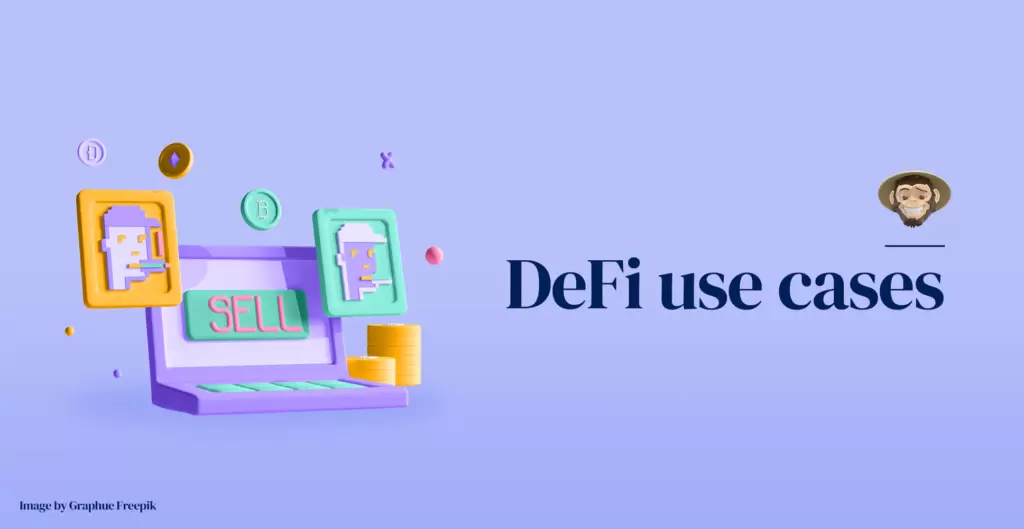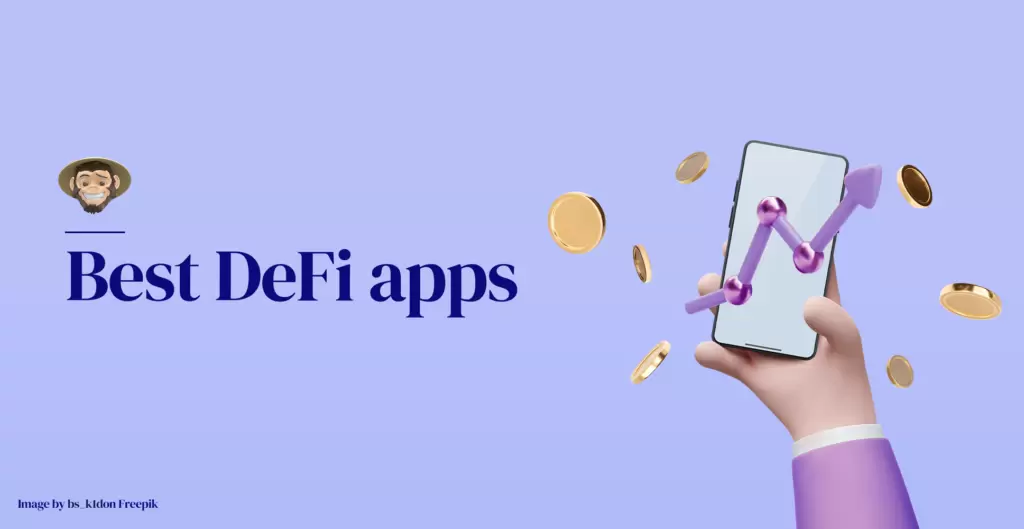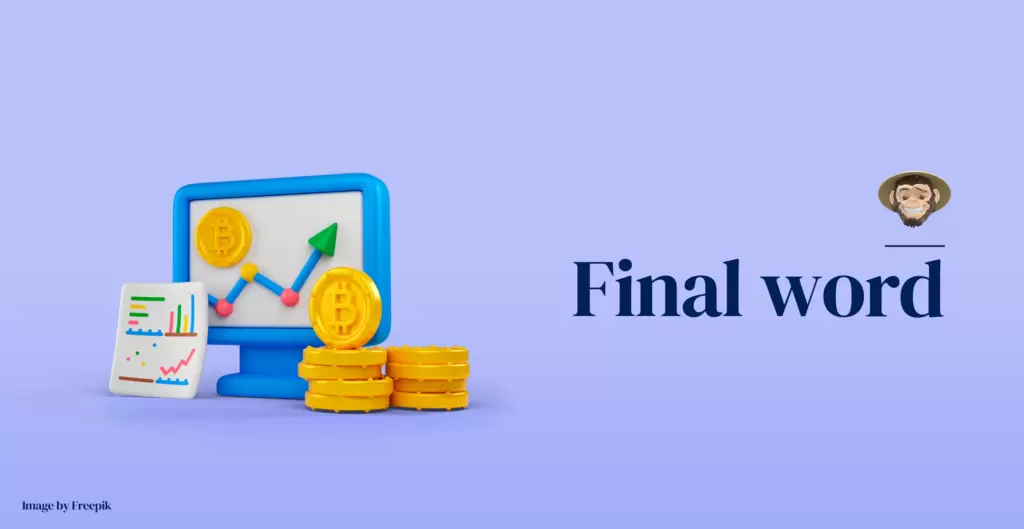The advent of online banking has transformed financial services and has shifted them towards becoming more efficient and decentralized. As a result, concepts such as DeFi have emerged to take us into the economic landscape of the future.
Think about how 20 years ago, you or your parents used to have to go to the closest bank’s branch for everything. There was no questioning the fact that physically going to the bank was the only way to meet your transactional needs. From depositing a check to making a cash withdrawal, physical bank branches were the center of the financial ecosystem of those times. Now, think about when was the last time you absolutely had to go to the bank to perform banking-related activities. When was the last time you had to wait in line at the bank to pay for something or make a deposit, for instance? Of course, it’s been a while, hasn’t it? But, of course, you have modern financial technology and FinTech apps to thank for that. They are the reason we now have broad access to all the online banking services that have simplified how we carry out financial transactions. However, since these technologies evolved like greased lightning, we now have access to numerous tools and platforms which allow you to do much more than use your smartphone to pay for that cup of coffee. One of these platforms is known as decentralized finance, or DeFi for short, and its popularity has grown to the point where DeFi apps are becoming a fad within the FinTech landscape.
DeFi apps and the DeFi app development market is growing, but it’s still far from oversaturation. Instead, it is slowly starting its journey into becoming one of the predominant trends in the FinTech development ecosystem. For this reason, we think it’s important and exciting to help you start familiarizing yourself with all things DeFi so you can get acquainted with how it works. This way, when it becomes widespread, and trust us, it will, you’ll have a head start, and you’ll have Foonkie Monkey to thank for it. So let’s get started.

What is DeFi?
Imagine going to get coffee like you do every morning before work. You pay with your credit card as always, and it gets declined. Why? Because that day, your bank decided that particular transaction was suspicious. Now what? Now, you must figure out another way to pay for your customary coffee and muffin. While getting your transaction declined for suspicious activity isn’t inherently terrible, banks do have to protect your money; after all, it is still a hassle when all you wanted was to have breakfast. And what if you weren’t paying for breakfast but making a serious, urgent transaction? In that case, “transaction declined” is the last thing you want to hear. But this is what happens when intermediaries such as banks with decades-old processes are a part of traditional financial transactions and control their outcomes. Platforms like DeFi rid us of these hassles because they securely eliminate the need for a middleman (i.g., banks) and eliminate their control over our money and financial products.
Decentralized finance is an emerging financial system based on blockchain technology that enables anyone with an internet connection to access a decentralized, borderless application platform where they can make financial transactions without intermediaries. In that sense, DeFi leverages the principles of decentralized applications, or dApps, which developers created to promote individual data ownership, self-governance, and transparency by removing the centralized authorities that have traditionally governed over data traffic. In the case of traditional centralized finance, those governing authorities have complete control over your money. For example, when you pay for something using your debit card, these entities facilitate your money’s movement between parties so that you can successfully purchase anything you want. Some may say this process is unavoidable and that these authorities are a necessary evil because our modern financial system needs them to function. But the sad truth is their underlying goal is making as much money as possible with your assets.
These corporations are free to hold your money, cancel your transactions, and charge as many fees as they want to allow you to use your money to pay for stuff, which is a hassle but is how the banking world has always worked. At any rate, centralized financial transactions are becoming increasingly expensive; some can even take days to go through. Loan applications take forever and may not even get approved; when you travel, you may have to pay extra fees to use your money overseas, and, in some cases, you might not even be able to use it. Thankfully, DeFi apps promise to put these entities’ hold over our money to rest.
Just like cryptocurrencies were designed to decentralize money, DeFi apps ambitiously seek to use the blockchain to decentralize foundational financial services such as payments, loans, investments, wealth management, and insurance. In that sense, DeFi apps could open traditional financial services to everyone, regardless of their condition. Moreover, they can potentially deliver a fully permissionless financial ecosystem based on the public digital ledger infrastructure.
Although DeFi is still burgeoning, it promises to become one of the main drivers of the creation of a modern online financial ecosystem. It currently has a total value locked (TVL) of $39.5 billion, a four-fold increase from the $9.1 billion it had in July 2020.
How does DeFi work?
DeFi takes the core premise of technologies such as blockchain, cryptocurrencies such as Bitcoin, and dApps and takes it a step further to build a better, fairer, faster, more open, and accessible alternative to traditional banking services. Here, massive enterprises and banking conglomerates are rendered useless thanks to the use of cryptocurrencies and smart contracts that enable decentralized, open digital financial services without intermediaries. So, instead of using your bank account or credit card to pay for stuff, you purchase digital currency and use it to conduct business and other transactions directly with a merchant or other users. In return, you not only get minimal or no transaction fees, but you also get things to speed up. Moreover, you have higher accessibility to a myriad of financial services that, in the current world of centralized finance, you may not have been able to access (i,e loans). Therefore, we can safely say that DeFi has the very real potential to open the world of digital finances to everyone and empower millions, if not billions, of users worldwide to take charge of their finances and decide how they do business online. But how does DeFi do that? How does it work exactly? Let’s find out.
- DApps and smart contracts
Typically, users access DeFi through decentralized applications. These applications, or dApps, are software programs similar to traditional applications, except they run on a blockchain network, typically the Ethereum blockchain, thus providing a Peer-to-Peer (P2P), decentralized financial environment. Running these dApps on a blockchain helps users combine them with each other creating a network of transparent transactions that is unlike anything we’ve seen before. In that sense, DeFi apps can revolutionize the financial world mainly because they work outside the confines of company-owned servers. Instead, their functionality is spread across a network of computers inside a blockchain. A single authority never controls it, thereby securing decentralization and removing the risks of third parties exercising control over their users and violating their privacy.
Moreover, DeFi apps leverage smart contracts that act as the connectors (think of an API in traditional app structures) between dApps, parties, and transactional activities. Smart contracts are self-executing programs that run automatically when certain conditions are met and verified. Developers program these conditions, which can’t be modified, into the smart contract’s code, so it only executes when those terms are fulfilled. For instance, if you want to purchase a real estate property and cut any costly middlemen, you can search digital properties on a blockchain, contact the seller and make your offer. If the seller is pleased with it, you both design a smart contract that lines out the terms of the transaction. Once you pay the agreed-upon value, the smart contract executes the fulfillment of the deal; no waiting for months, no banks, no agency royalties, and no costly transaction fees. This way, smart contracts help execute decentralized agreements and transactions between participants without a supervising third party such as a lawyer, bank, government agency, or other organization.
Lastly, users that access DeFi apps need a secure e-wallet such as Coinbase or MetaMask to store their funds or digital assets. Then, when they want to fulfill a DeFi transaction, they can create a smart contract to send or receive funds which, once set up, cannot be modified, increasing the security level of all DeFi activity.
- Ethereum
Because of its myriad benefits, Ethereum is naturally befitting for DeFi. As a matter of fact, today, it is the platform on which all DeFi projects are built, and it is the standard blockchain network on which most dApps are running. Moreover, Ethereum is essential for decentralization because of its flexibility and security. Not only does this flexibility allow developers to create dApps without much trouble, but it also opens up the possibility of building more innovative, scalable, and flexible DeFi-based financial products. And, since most DeFi applications are built on Ethereum, they are interoperable and can work together seamlessly to help build a decentralized global financial ecosystem.

Pros of DeFi
Since DeFi is still an experimental technology, it is still far from reaching its full potential. However, with its current applications, we can already get a glimpse into the benefits that will surely make it one of the keys to unlocking a fully decentralized financial environment. Here are some of them:
DeFi is highly secure
Due to the immutable nature of blockchain’s architecture and the immunity provided by smart contracts, DeFi apps built on top of them are tamper-proof, highly secure, and transparent. DeFi smart contracts deployed on blockchain networks always act as per the instructions and the terms written in their code. These terms can’t be modified under any circumstances. As a result, there is no way to hack or corrupt a DeFi transaction. The algorithm programmed within the smart contract executes the instructions as soon as the terms are met. There is no way to tamper with it, making the DeFi transactional system highly secure, tamper-proof, and extremely transparent.
DeFi is permissionless
Unlike centralized finance, where you would have to meet certain conditions to access most financial services (i.g., the minimum balance for transactions or certain income limits for credit cards and loans), DeFi grants permissionless access to anyone and everyone regardless of their financial situation, age, job status, or income level. Furthermore, the only condition to access DeFi services is to have a crypto wallet and internet access. As a result, DeFi represents a critical point of entry into the financial world for those individuals who have struggled to access traditional banking products. Furthermore, DeFi has the potential to allow people in limited economies, emerging markets, or third-world countries to access banking products and functions that would otherwise be unavailable in their situation. In that sense, we can say that thanks to its permissionless and accessible nature, DeFi democratizes finance as it opens up the financial world to everyone.
DeFi transactions are transparent.
One of blockchain’s main benefits is its transparency. Every transaction in the network is
Time-stamped and broadcasted publicly so that it is visible to every user. This way, if a transaction record changes, everyone can see the details of said change, ensuring transparency and increasing the network’s wholesomeness and security. This level of transparency is particularly beneficial for DeFi-powered transactions because it gives users peace of mind regarding the safety of their assets and the security surrounding their transactions, guarantees rarely provided by traditional banking services.
DeFi protocols are open-source.
DeFi protocols and applications are open-source, meaning their source code is publicly shared and open for all participants and users to inspect, modify, innovate on, and use to build their own DeFi apps. As a result, users and developers can mix and match DeFi protocols to build revolutionary dApps and DeFi applications that have the potential to unlock unique online financial opportunities. On top of that, open-source protocols allow developers to connect multiple DeFi apps to create interoperable digital financial products without asking for permission or waiting for a central organization to grant its approval.

Cons of DeFi
Despite its many benefits, DeFi is currently behind on many crucial aspects that can impact its broad adoption. As it usually happens with every emerging and potentially disruptive technology, DeFi still has to evolve and improve on major points if it wants to overcome the obstacles that may impede its broad adoption. Here are some of those obstacles.
Security concerns
Yes, earlier, we listed security as one of DeFi’s benefits. But as you’ll see, some of DeFi’s benefits are also its flaws. Security-wise, DeFi has solid points but lacks some crucial safeguards. For one, access to blockchain accounts is regulated by private keys, which are like the PIN code you use to access your bank account or withdraw cash. Unfortunately, the problem with private keys in DeFi is that there are too many possible ways of them leaking or getting stolen. What’s worse, with smart contracts, if a hacker steals an admin private key, they can gain complete control over that particular smart contract and modify it to steal unlimited funds. In fact, in April 2021, EasyFi, a popular DeFi protocol, lost $80 million in a hacking incident where admin keys were stolen from the founder’s MetaMask e-wallet.
Second, while hacking incidents are also common in traditional finance platforms, DeFi’s inherently open architecture powered by blockchain makes coding and business logic errors too common for comfort. Moreover, these errors and other bugs in both the DeFi protocol and smart contracts are hard to pinpoint in time to fix them, which can lead to catastrophic consequences since, in the blockchain, even fraudulent transactions are irreversible.
Lack of supervising agents
Again, decentralization is one of DeFi’s main benefits but can also be a flaw. The lack of regulators and other supervising agents drives financial empowerment. It also increases accessibility to most financial services, but it also means there is no all-seeing eye to oversee the wholesomeness of the transactions. For example, in traditional banking, you can file a claim when someone steals your credit card information and makes illegal purchases. After investigating, the bank will likely reimburse you for those fraudulent transactions. DeFi apps have no entity to turn to if someone hacks into the transaction.
Collateral requirements for loans are too high.
In DeFi, people who couldn’t acquire traditional financial services such as loans can now easily access them via most DeFi apps and platforms. However, most, if not all, DeFi lending transactions require excessive collateral, sometimes even 300 percent, or more, of the loan’s value. Naturally, these sky-high requirements stem from the lack of assurances, such as credit scores, that come with decentralization and the absence of a supervising third party. As a result, they vastly restrict accessibility to most types of DeFi loans.
DeFi is still too experimental.
The DeFi ecosystem is still nascent, as was every other technological advancement we now use on a daily basis. However, DeFi’s premise is too ambitious, and there’s still a lot of technical experimentation and blind innovation, not to mention the many obstacles that come with decentralization. As a result, accessibility is still limited, and the user experience of most DeFi platforms is very unintuitive.
Hopefully, developers and stakeholders will manage to address these flaws and implement the safeguards and features that will allow DeFi to take off as a robust, failsafe alternative to the traditional financial ecosystem. Still, even if it’s in its infancy, DeFi already has some promising use cases and platforms that can potentially drive the broad adoption of the decentralization we so desperately crave. Here are some of them.

DeFi use cases
Asset management: DeFi protocols empower users to become the sole custodians of their funds. Since users need e-wallets to access DeFi apps, they get immediately acquainted with a tool that quickly and securely allows them to interact with DeFi and other dApps. As a result, they can buy, sell, transfer, and trade digital assets and crypto without needing a third party to manage these activities for them.
DeFi lending: As we mentioned earlier, DeFi platforms give users the chance to borrow and lend digital assets while earning attractive interest. Although this use case still has its flaws, as you already learned, it represents an encouraging benefit for those who couldn’t access loans in traditional banking.
Stablecoins: Cryptocurrency is godsent for our modern online financial ecosystem, but its volatility has become a problem for successfully trading some digital products and performing some blockchain transactions. DeFi’s answer to some of these issues is stablecoins. Stablecoins are cryptocurrencies whose value is pegged to a fiat currency with ensured stability, such as the US Dollar.
DEX (Decentralized Crypto Exchanges): Decentralized crypto exchanges leverage smart contracts to allow DeFi users to trade cryptocurrencies without needing a central authority. DEXs’ main premise is to allow two parties to trade assets via a trustless peer-to-peer exchange that lets both sides maintain custody of their funds.
Insurance: Using smart contracts, DeFi users can access insurance policies with automatically-paid monthly premiums. Also, most DeFi insurance apps leverage smart contracts to automate payment terms, and some even use them to carry out simulations to determine the value of an asset.

Best DeFi apps
Uniswap: Uniswap is a crypto trading platform that leverages a type of smart contract called an Automated Market Maker (AMM) to facilitate decentralized crypto exchanges automatically. Founded in 2018, this app uses a DeFi protocol that helps them determine token prices on Ethereum by automatically analyzing liquidity for all tokens involved on in-app exchanges.
Compound: Compound is a DeFi protocol that allows users to borrow and lend specific cryptocurrencies such as Ether, USD Coin, and Sai. Using Compound, users can earn interest against collateral and can borrow crypto immediately, without needing a third party or the extra effort of dealing with a financial intermediary.
Maker: Maker Maker is an Ethereum DeFi loan and credit platform that supports Dai, a stablecoin pegged to USD. Users can borrow Dai with collateral of up to 66 percent, and lenders can gain interest with Maker’s profitable rates.
Flexa: Flexa is a fraud-proof payment network for instant cryptocurrency and stable coin transactions. Users can use Flexa to send or receive payments instantly and with zero fees across the US and Canada.
DeFi Swap: DeFi Swap is a decentralized exchange platform known for its simplicity. It allows users to buy and sell cryptocurrencies anonymously without creating an account. Instead, users simply connect their e-wallet to the platform and start trading.

Final word
DeFi is a promising, innovative, and expansive financial ecosystem that aims to make decentralization a recurrent theme in online banking services. It seeks to eliminate unnecessary go-betweens and promote economic independence by giving users back control over their assets and empowering them to learn and understand independent financial decisions. That all sounds perfect, and in an ideal world, it would be. Nonetheless, DeFi is currently at a stage where there’s a lot of experimentation and speculation instead of actual professionally established decentralized operations. The gap between theory and practice is still huge, and while we can say the same about most emerging technologies at their initial stages, DeFi has yet to overcome too many roadblocks. Still, we hope to see most of these issues resolve as the technology evolves and the DeFi industry matures. In the meantime, as DeFi starts to take off, we can start enjoying the promising solutions already out there so that when DeFi’s burgeoning popularity becomes widespread, we already know what the technology is all about.
If you have any questions regarding DeFi or any other subject you consider we may be able to help you with, don’t hesitate to contact us. We’re happy to help!
